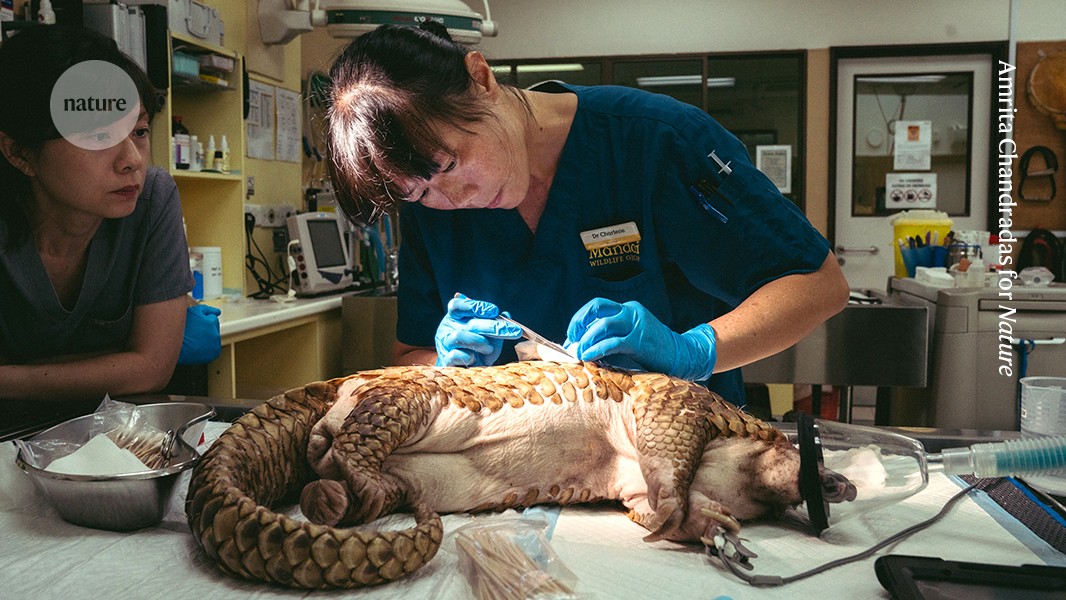
"One of the biggest threats to pangolins globally is habitat loss, but here in Singapore, road accidents are a larger immediate threat. We live in an urban city but we have a lot of wildlife all around us as well, so some encounters are inevitable. I work as a veterinarian at Mandai Wildlife Group, which manages the Singapore Zoo. In this image, taken in May, I'm examining Berani, a big male Sunda pangolin ( Manis javanica), at our facilities in the zoo."
"Berani - which means brave in Malay - was a wild pangolin who first came to us after a probable traffic accident in 2018. His femur was fractured and we decided to help him by surgically implanting a metal plate to support healing. It was a tricky job: to avoid his scales we had to approach the bone from the medial aspect - the belly side - of the leg."
"He recovered from the surgery but developed a skin condition after some time, which is what my colleague and I are inspecting in this picture, with Berani under anaesthesia. The condition was a type of pemphigus, an autoimmune disorder for which he was eventually euthanized."
Habitat loss is a major global threat to pangolins, but in Singapore road accidents present a larger immediate threat. Singapore is an urban city yet contains substantial wildlife, making some human–wildlife encounters inevitable. A veterinarian at Mandai Wildlife Group examined Berani, a large male Sunda pangolin (Manis javanica), at zoo facilities. Berani arrived after a probable traffic accident in 2018 with a fractured femur. Surgeons implanted a metal plate to support healing, approaching the bone from the medial (belly) side to avoid damaging scales. Berani recovered from surgery but later developed pemphigus, an autoimmune skin disorder, and was eventually euthanized.
Read at Nature
Unable to calculate read time
Collection
[
|
...
]